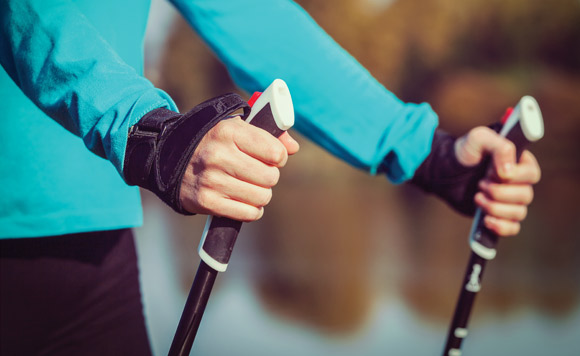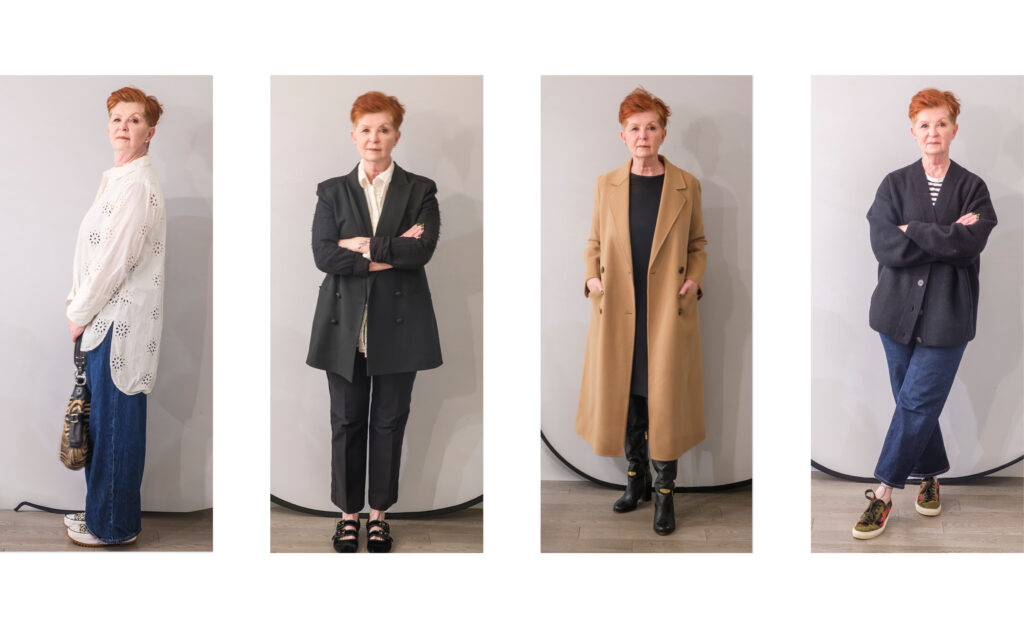– by Moira Gardener –
As my body shows signs of wear and tear from athletic injury and mileage, I looked for ways to get my cardio exercise. Hiking, cycling and swimming had all proved difficult and I eyed Nordic Pole Walking with suspicion, not feeling ready for double canes.
As luck would have it I happened upon some poles in a thrift store. I did the first thing I always do with new things, I goggled, “Nordic Pole Walking”, and watched some Youtube videos. Finding a reasonable introductory lesson taking place in Victoria a few days later I decided, why not? So with poles in hand I embarked on a sunny Sunday afternoon to experience pole walking.
Until I took this introductory lesson I looked at pole walking as a ‘gray-hair’ activity. But our instructor explained the various types of poles and that what we were about to do was not rehab – but sport. Nordic Pole Walking is the summer counterpart to cross-country skiing, and it works the whole body not just the legs. That sounded good. I love skiing and could imagine myself whooshing across snow covered trails viewing scenic wilderness.
We learned the importance of setting our poles up: this means having the correct pole tips (ones with an angle), pole height (grip is there when arm is at right angle with pole vertical), and proper grip. In this lesson the hand is held to the pole by an attached glove. The grip is a squeeze between thumb and index finger with palms open and hand parallel to the ground.
Next we learned how good posture is important. You should look up at the horizon not down at the feet. I hadn’t realized how my fear of another twisted ankle had destroyed my posture. I had always looked down, but the poles gave me the confidence to look up and step out.
I discovered that the poles take care of themselves as we step out. In this particular method, once the equipment is set up, you look to the horizon, and then simply find your pace, poles dragging behind. It’s only when the pace is found do you add in the poles. The arm is either straight or slightly bent, according to the walkers’ specific need as assessed by the instructor. The arm moves from the shoulder not the elbow. The final step was to feel the pole as you step along and at the right moment push down, getting a slight push off.
The hour and a half spent in this first experience was about 30 minutes of instruction, and 60 minutes of walking under the eye of an experienced trainer. She tweaked our individual technique as we strode along. What I loved was: the body awareness I gained, a better posture, looking up with confidence, and finding my pace.
I came away encouraged, hopeful of getting fit once again, and the lofty thought of cross-country skiing dancing in my head as a bonus. I also considered booking a private lesson to see what it’s like going from the flat groomed bicycle trails to the various terrains in this wonderful community of ours.




